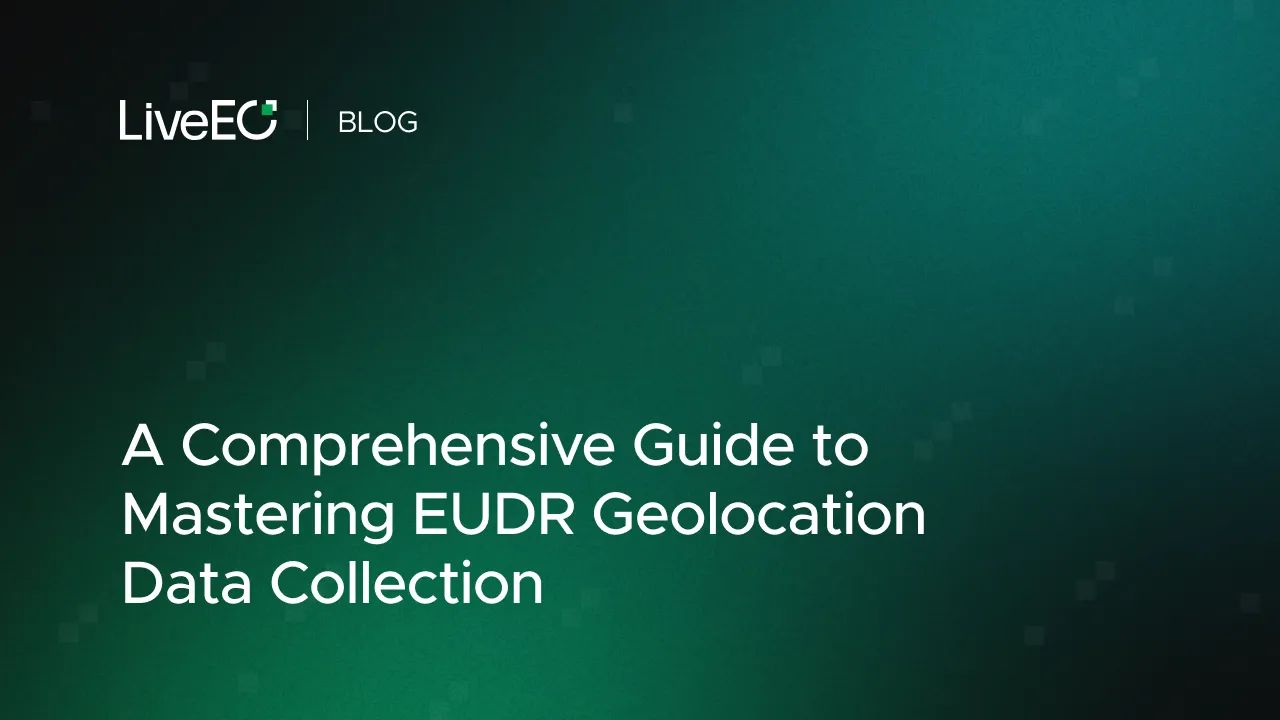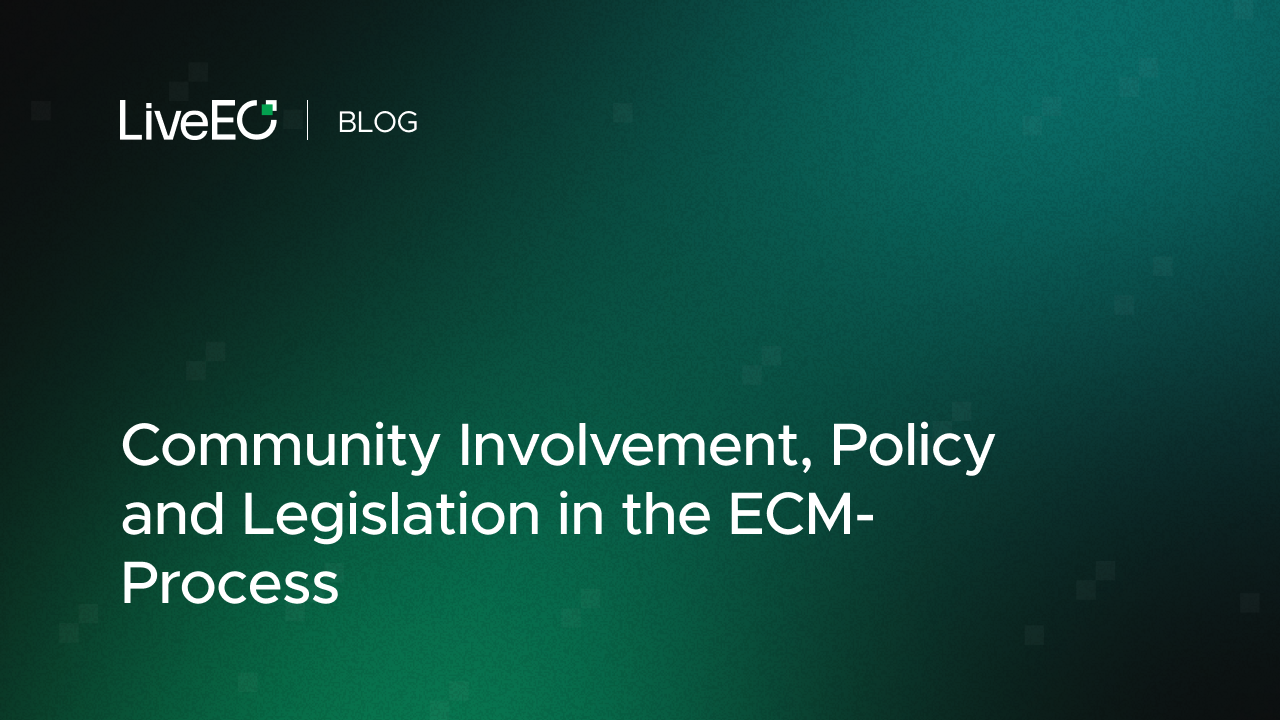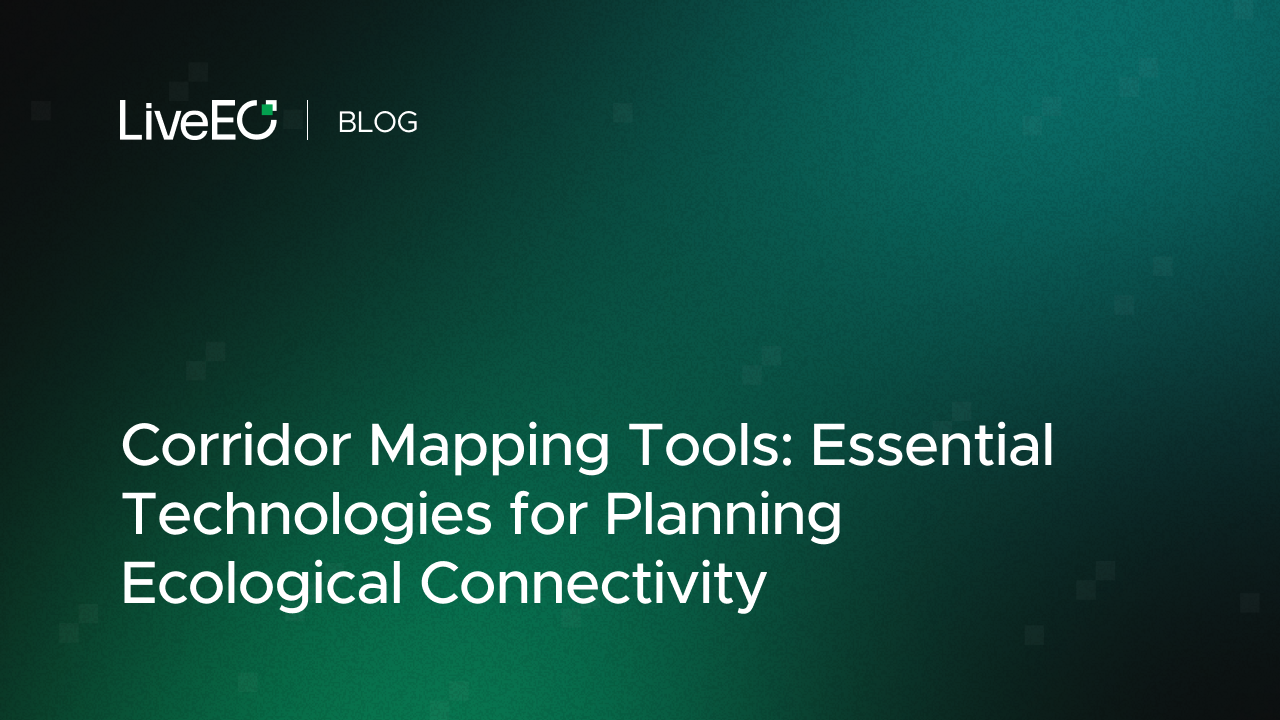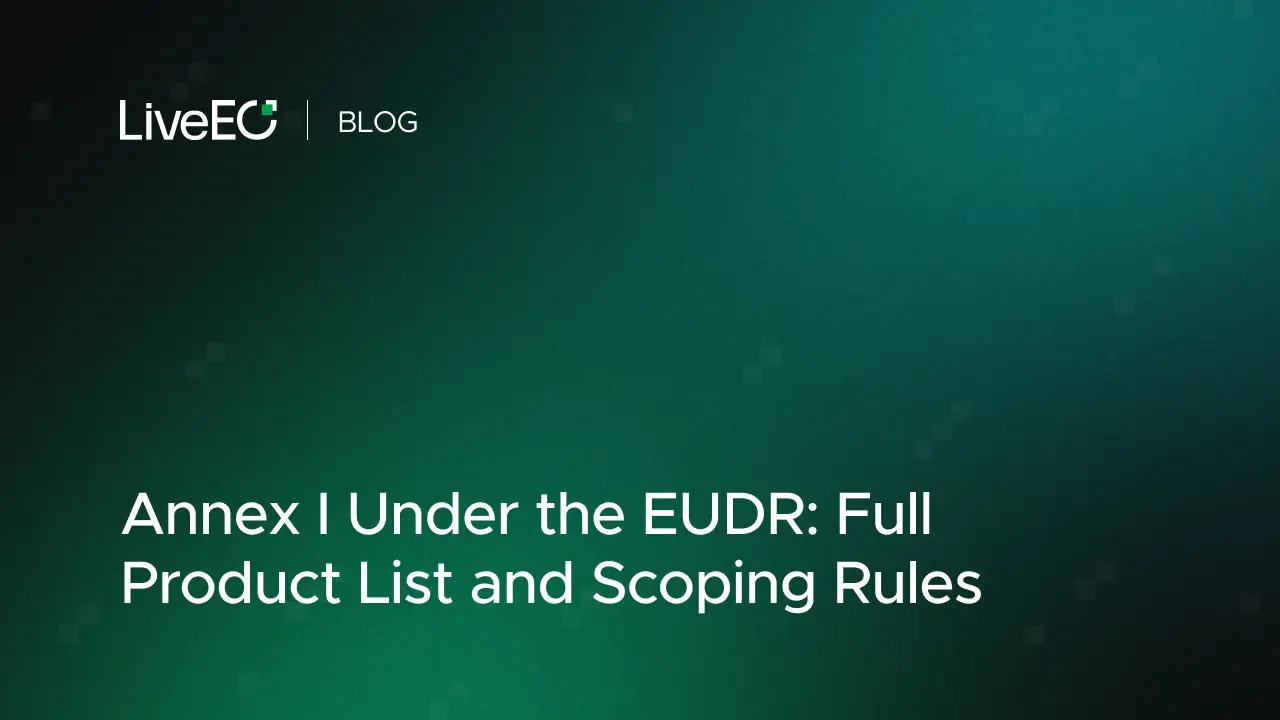
The European Union Deforestation Regulation (EUDR) represents a pivotal step in global efforts to combat deforestation and promote sustainable practices.
As businesses increasingly prioritize environmental responsibility, understanding and complying with EUDR becomes crucial. Importers, manufacturers, and exporters must comply with the new regulation, which introduces a three-step due diligence mechanism and sets deadlines for compliance.
This guide aims to provide a thorough understanding of EUDR’s geolocation data collection requirements, helping businesses navigate the complexities of compliance effectively.
Key Takeaways
- The EU Deforestation Regulation (EUDR) aims to reduce deforestation and forest degradation linked to commodities like palm oil, cocoa, coffee, rubber, and timber, enhancing sustainable practices and global environmental responsibility.
- EUDR introduces a three-step due diligence mechanism, requiring importers, manufacturers, and exporters to ensure transparency and accountability within their supply chains.
- Compliance involves collecting detailed data on product quantity, country of production, geolocation of plots, supplier contacts, and deforestation-free verification.
- Geolocation data is vital for tracing products to their origins, using precise latitude and longitude coordinates to verify that they are not sourced from deforested areas. For plots larger than four hectares, data must be provided using polygons to describe boundaries accurately.
- Challenges in gathering geolocation data include ensuring accuracy, engaging suppliers, overcoming communication barriers, and managing extensive data across the supply chain.
- Companies often face difficulties tracing commodities to their exact origins due to supplier knowledge gaps and the complexity of global supply chains.
- Digital platforms and satellite-based solutions like TradeAware streamline data collection, enhance accuracy, and improve management efficiency.
- By embracing tools like TradeAware, businesses can effectively navigate EUDR compliance, contribute to global sustainability efforts, and build more resilient and transparent supply chains. To learn more about how TradeAware can help you comply with EUDR and enhance your sustainability practices, click here.
Overview of the EU Deforestation Regulation and Its Importance
The EU Deforestation Regulation (EUDR) is a regulatory framework introduced by the European Union to reduce deforestation and forest degradation, which are largely caused by the consumption of commodities such as palm oil, cocoa, coffee, rubber, and timber.
By requiring transparency and accountability within supply chains, the EUDR aims to ensure that products entering the EU market are not linked to illegal deforestation activities.
This regulation is not only a legal obligation, but also a significant step towards sustainable development, biodiversity conservation and climate change mitigation.
For companies, compliance with the EUDR improves their market presence and brings them in line with global environmental goals.
EUDR: Information Collection Requirements
To adhere to the EUDR, companies must collect detailed information about the origin of their commodities and the supply chains they traverse.
This involves documenting the entire journey of a product, from its source to the final point of sale within the EU.
.webp)
Key data points required (Article 9 of EUDR) include:
- Product quantity of the relevant products
- Country of production and, where relevant, parts thereof
- Geolocation of all plots of land used for production
- Contact information of any suppliers and recipients
- Verifiable information that products are deforestation-free
- Verifiable information on production in accordance with local legislation
In this guide, we will focus on the collection of geolocation data and supplier contact information, which are critical for compliance.
Successfully navigating these requirements ensures that businesses are not only compliant with EUDR but also actively contributing to global sustainability efforts.
By systematically collecting and managing this data, companies can build more resilient and transparent supply chains, fostering greater trust and collaboration with stakeholders.
Ready to stay ahead of your EUDR compliance? Sign up for TradeAware Lite today and start gathering your geolocation data.
Understanding Geolocations
Geolocation within the EUDR context refers to the precise geographic coordinates identifying the exact location where commodities are produced.
This data is crucial as it allows regulators and companies to trace products back to their origins, ensuring they are not sourced from areas subject to illegal deforestation.
Geolocation data includes latitude and longitude coordinates, plot boundaries, and any relevant geographic identifiers. Geolocation data is typically provided as polygons that mark the exact boundaries of a plot of land.

The dotted yellow polygon marks a rubber plantation in the TradeAware application.
For plots of land of more than 4 hectares, the geolocation must be provided using polygons, meaning latitude and longitude points of six decimal digits to describe the perimeter of each plot of land.
For plots of land under 4 hectares, operators (and traders which are not SMEs) can use a polygon or a single point of latitude and longitude of six decimal digits to provide geolocation.
Establishments where cattle are kept can be described with a single point of geolocation coordinate.
This level of detail helps in verifying compliance with EUDR by providing a clear, traceable link between products and their source locations, which is essential for maintaining transparency and accountability in the supply chain.
Satellite monitoring is often used to collect this geolocation data, further enhancing the accuracy and reliability of the information.
Importance of Geolocation Data in EUDR Compliance
Geolocation data is a cornerstone of EUDR compliance for several reasons.
- It ensures traceability, allowing companies and regulators to monitor the exact origin of commodities. This is vital in verifying that products are sourced from deforestation-free areas.
- Accurate geolocation data supports risk assessments and the due diligence processes, enabling companies to identify and mitigate potential environmental risks within their supply chains.
- The use of geolocation data promotes transparency, helping companies build trust with consumers and stakeholders by demonstrating a commitment to sustainable practices.
Ultimately, geolocation data is not only a regulatory requirement but also a tool for fostering environmental stewardship and corporate responsibility.
Read also: EUDR and Its Impact on UK Businesses: A Guide to Navigating New Regulations
Submitting Geolocation Data for EUDR Compliance
To comply with the EUDR, geolocation data must be submitted in a precise and verifiable manner.
Businesses need to provide the geographical coordinates of every plot of land where the relevant commodities were produced.
The geolocation information should be included in the due diligence statements and maintained for at least five years, ready for review by competent authorities to confirm compliance with deforestation-free requirements.
The geolocation data for EUDR compliance should be formatted as follows:
- Coordinates: Use latitude and longitude coordinates with at least six decimal digits to ensure precision.
- Plot Details: For plots larger than four hectares, the geolocation must be provided using polygons. These polygons should have sufficient latitude and longitude points to accurately describe the perimeter of each plot.
- File Format: Geolocation data can be submitted in standard geospatial data formats such as GeoJSON, which allows for easy integration and verification.
This format ensures that the geolocation data is precise, comprehensive, and easily verifiable, meeting the stringent requirements set by the EUDR for traceability and compliance.
Additionally, businesses should ensure that the data is collected and submitted in a timely manner to avoid delays in compliance checks. It is advisable to use reliable and accurate tools for geolocation mapping to minimize errors.
Challenges of Gathering Geolocation Data for EUDR Compliance
One of the fundamental challenges in EUDR compliance is the complexity of gathering accurate geolocation data.
For instance, a large company making chocolate spread may be purchasing palm oil but might have no clear information about where it is grown exactly.
This lack of transparency is often compounded by the fact that suppliers themselves may not have detailed knowledge of the exact origins of their commodities.
To comply with EUDR, businesses must trace their supply chains back to the source, obtaining geolocation data for every plot of land used in production.
This is a massiveundertaking that involves not just direct suppliers, but also sub-suppliers and various intermediaries within the supply chain.
The process requires overcoming significant barriers such as:
- Low Awareness and Engagement: Many suppliers might be unaware of EUDR requirements or reluctant to share detailed geolocation data.
- Data Accuracy and Verification: Ensuring the accuracy of the provided geolocation data is a challenge, necessitating third-party verification and cross-referencing with satellite imagery.
- Communication and Cultural Barriers: Effective communication across different regions, languages, and cultures can hinder the data collection process.
- Technological Resistance: Some suppliers may be resistant to adopting new data-sharing technologies, complicating the data collection process.
- Managing Extensive Data: Handling and organizing data from numerous suppliers and sub-suppliers requires robust data management systems and governance frameworks.
The need to gather geolocation data from the very top of the supply chain, coupled with the vast and varied nature of these supply chains, presents a daunting challenge for businesses aiming to comply with EUDR.
In the next part of the article, we’ll examine the differences between manual and semi-automated methods for gathering geolocation data.
Read also: The Road to EUDR: Key Dates and Milestones in the EU's Deforestation Regulation
Manual Methods for Collecting Geolocation Data
To comply with the European Union Deforestation Regulation (EUDR), companies can use manual methods to track and document the geographic origins of their products.
These, however, are labor-intensive and time-consuming. They involve collecting geographic coordinates and data from suppliers through emails and spreadsheets.
Moreover, this process demands extensive coordination with multiple suppliers, aggregating diverse data types, ensuring completeness, and organizing the information for risk assessments and compliance checks.
{{inline}}
Manual collection often includes visiting production sites to gather precise geolocation data using GPS devices, which are then manually entered into databases.
While feasible, these methods are error-prone and require significant human resources for data management and verification. Given the complexity and scale of modern supply chains, this can be overwhelming.
This is why more and more companies are adopting digital platforms and satellite-based solutions such as TradeAware to streamline geolocation tracking, enhance data accuracy, and improve management efficiency, thereby reducing the burden of manual processes and ensuring better compliance with EUDR requirements.
Streamlining the Geolocation Data Collection with TradeAware
Satellite technology plays a pivotal role in achieving EUDR compliance. By leveraging advanced satellite analytics, companies can accurately track and monitor their supply chains.
At LiveEO, we have been at the forefront of the shift towards more sustainable and deforestation-free supply chains. Our end-to-end solution, TradeAware, provides accurate data on land use and its changes, i.e. the conversion of natural forest to agricultural use, enabling businesses to identify and address deforestation risks promptly.
As mentioned before, a crucial aspect of EUDR compliance is the creation and submission of a due diligence statement for each delivery, ensuring products are deforestation-free and meet all relevant legislations.
Our tool enables companies to submit due diligence statements directly to the EU information system to ensure compliance with the EU Deforestation Regulation (EUDR).
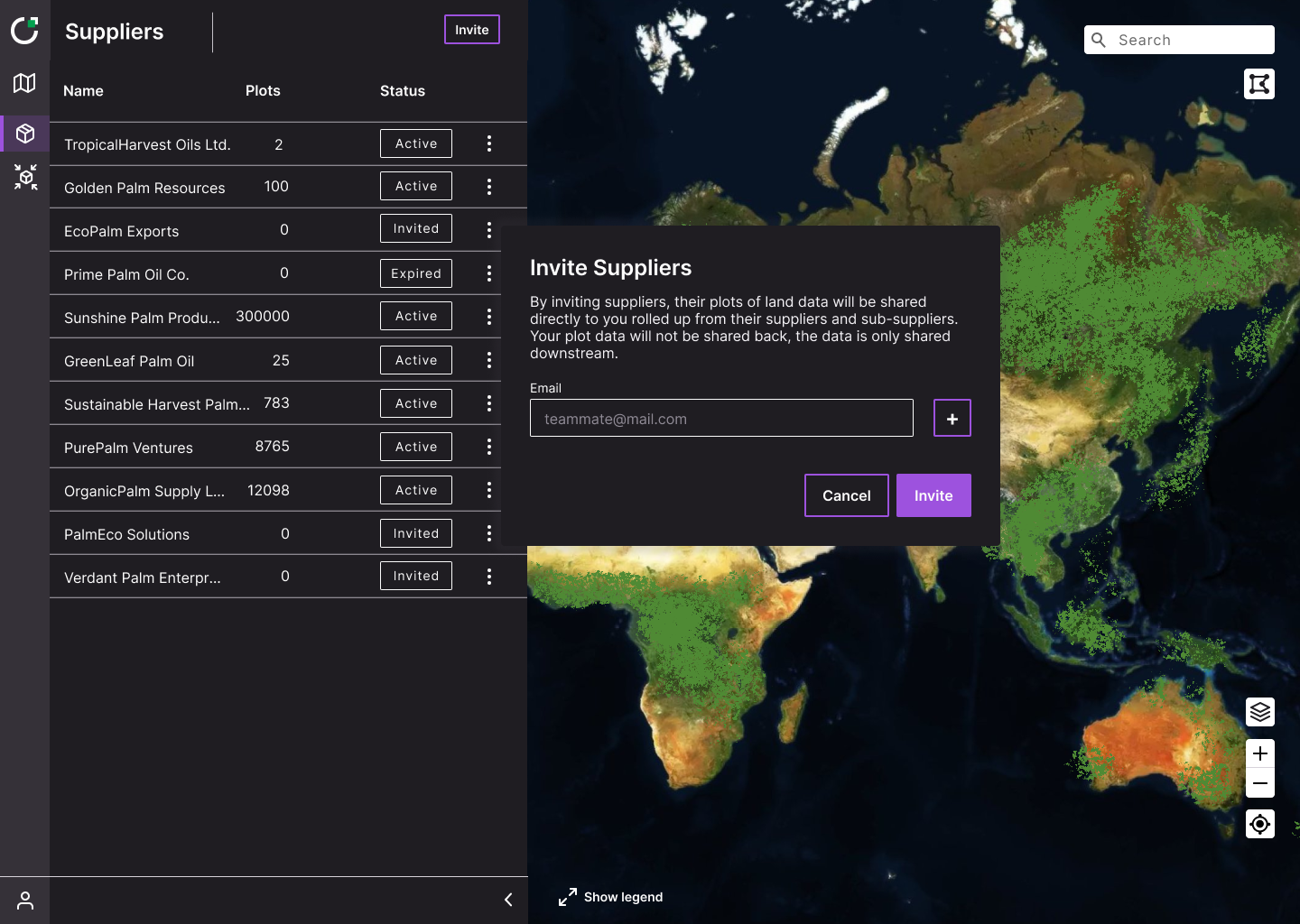
The introduction of the Commercial Network within TradeAware represents a transformative solution for companies striving to comply with the EUDR compliance requirements.
This feature simplifies the complex task of geolocation data collection through a collaborative and secure platform.
The Commercial Network: How it works
The Commercial Network operates similarly to a social network, where companies can send business invitations to their suppliers to establish business connections.
Companies can seamlessly request geolocation data from their suppliers, who can further request information from their sub-suppliers.
This cascading process continues until all relevant plot data is mapped and accessible on the platform, ensuring comprehensive data collection across the entire supply chain.

Security Aspects of the Commercial Network
The Commercial Network allows suppliers to share essential geolocation data without exposing sensitive business information.
Contact details are only visible to the closest connection, safeguarding the confidentiality of indirect supplier relationships.
What is more, as a SOC2-compliant organization, LiveEO guarantees the highest standards of data security. This way, data shared within the Commercial Network is secure and validated, ensuring that the information used for compliance is both accurate and reliable.
The Commercial Network is accessible to all versions of TradeAware, including the free TradeAware Lite version. By leveraging this tool, companies can significantly improve their compliance processes, ensuring they meet EUDR requirements with greater ease and efficiency.
Sign up for free for TradeAware Lite now to establish your Commercial Network on TradeAware and transform your compliance processes.
Conclusions
The European Union Deforestation Regulation (EUDR) presents a significant step towards sustainable development by curbing deforestation and promoting responsible supply chain practices.
Understanding and mastering the geolocation data collection requirements is essential for businesses aiming to comply with EUDR.
By embracing innovative solutions like the Commercial Network within TradeAware, companies can navigate the complexities of EUDR compliance more effectively.
These efforts not only ensure legal adherence but also contribute to the global fight against deforestation, enhancing the sustainability and integrity of supply chains worldwide.
As businesses continue to prioritize environmental responsibility, mastering EUDR geolocation data collection will be a crucial component of their commitment to a greener future.
FAQ
Q: My suppliers are not fully aware of the EUDR and their obligations. How can I educate them?
A: Open communication is key. Share valuable resources like our EUDR Handbook with your suppliers to help them understand their obligations under the EUDR. Regular training sessions, webinars, and informational newsletters can also be effective in keeping them informed and compliant.
Q: How do I ensure the accuracy of the geolocation data provided by suppliers?
A: Ensuring the accuracy of geolocation data from suppliers involves several key strategies.
Firstly, leveraging advanced geospatial technologies such as AI-powered satellite monitoring solutions can greatly enhance data precision.
These technologies provide real-time, high-accuracy data crucial for verifying the exact locations of supply sources.
Secondly, collaborating with independent third-party verification services adds an additional layer of credibility by cross-checking the geolocation data provided. Cross-referencing with satellite imagery and remote sensing technologies further validates the information, allowing for visual confirmation of geographic details.
Finally, implementing a robust data validation framework, including regular audits and multiple data source corroboration, ensures systematic identification and correction of any inaccuracies.
By integrating these approaches, you can significantly improve the reliability of the geolocation data in your supply chain, ensuring compliance and fostering sustainable practices.
Q: What should I do if suppliers are unable to provide the required geolocation data?
A: Work collaboratively with your suppliers to identify and address barriers to data collection. Provide support and resources to help them gather the required data. If suppliers remain non-compliant, consider replacing them with those who can meet the EUDR requirements.
Q: How can I manage suppliers who are not responsive to data requests?
A: Implement a structured follow-up process with reminders and deadlines. Offer incentives for timely responses and establish contractual obligations for data sharing to ensure compliance. Consistent follow-up and clear communication can help manage non-responsiveness.
Q: How can I effectively manage geolocation data from multiple suppliers and sub-suppliers?
A: Utilize a centralized data management platform like TradeAware to streamline the collection and management of geolocation data. Establish a clear data governance framework to ensure data consistency and reliability across your supply chain.
Q: What can I do to overcome language and cultural barriers in communicating with suppliers?
A: Use multilingual communication tools and services. Employ local intermediaries or representatives who understand the cultural context and can facilitate communication. Provide translated documents and training materials to ensure clear and effective communication.
Q: How can I maintain open lines of communication with all my suppliers?
A: Establish regular check-ins and updates via newsletters, emails, and meetings. Create a dedicated support team or contact point for suppliers to reach out to with questions or issues. Consistent communication helps in building a strong, cooperative relationship with your suppliers.
Q: How can I address supplier resistance to new data-sharing technologies?
A: Provide training and support to ease the transition to new technologies. Highlight the benefits of compliance, such as improved market access and sustainability credentials. Use contractual agreements to enforce data-sharing requirements and ensure compliance.
Q: How can I protect sensitive information while sharing supplier data?
A: Use secure data transmission tools like TradeAware to ensure the safety of data sharing. Only share compliance-related data and keep sensitive business information confidential. Implement robust data security measures to protect the integrity and confidentiality of supplier data.



